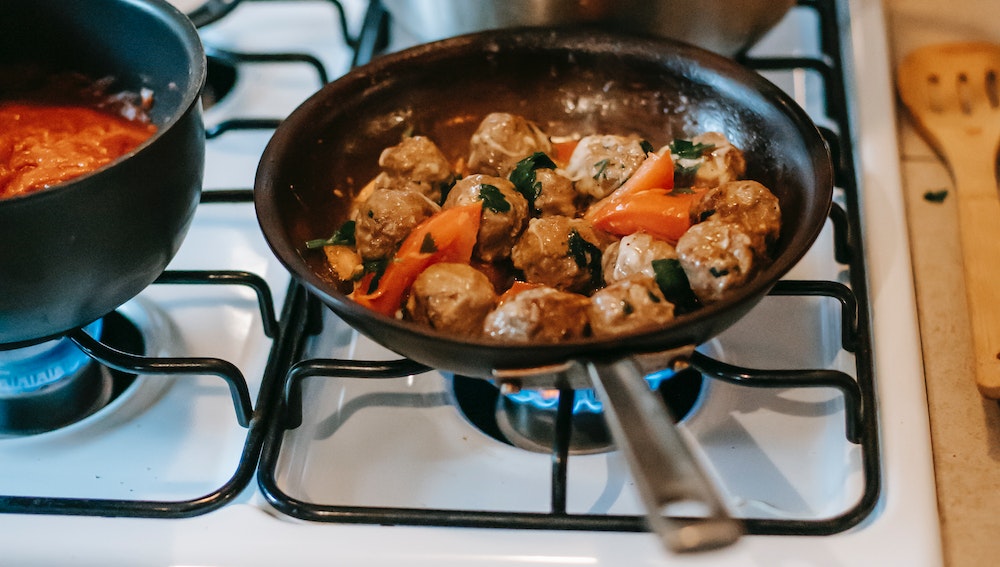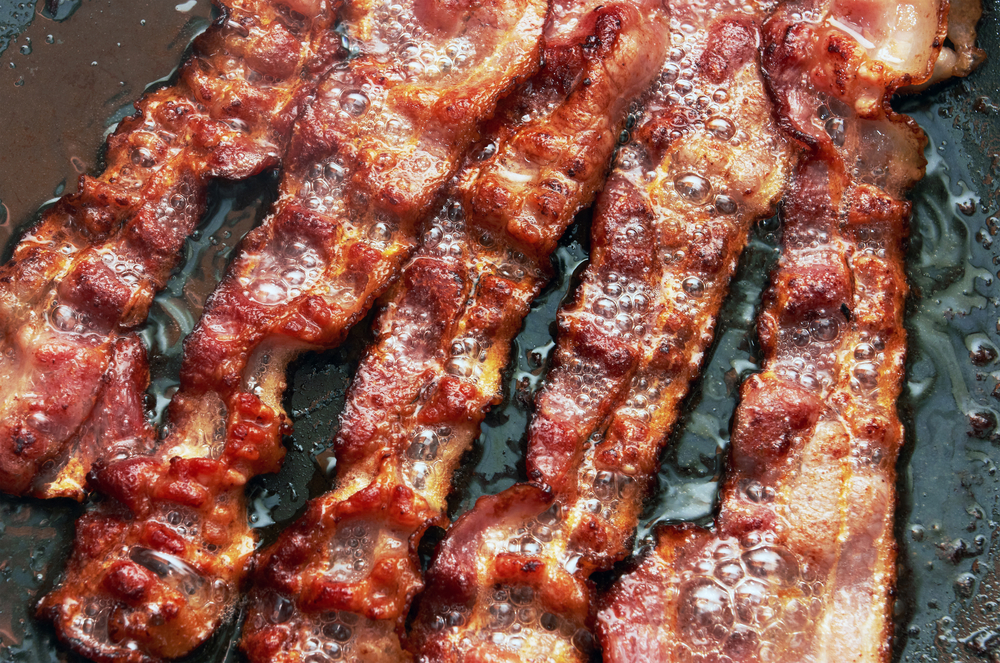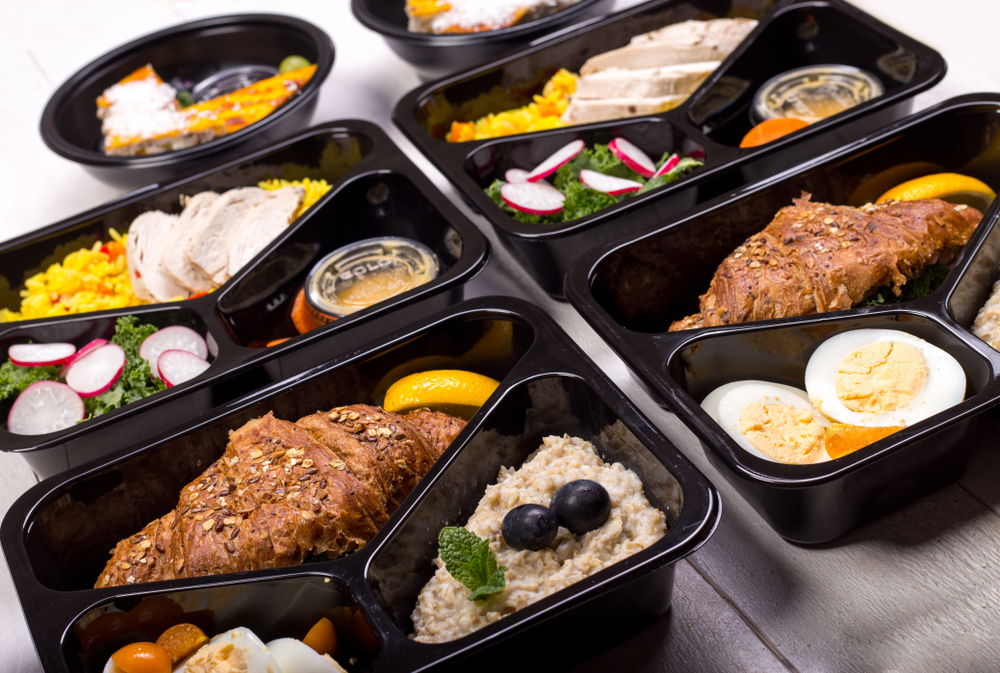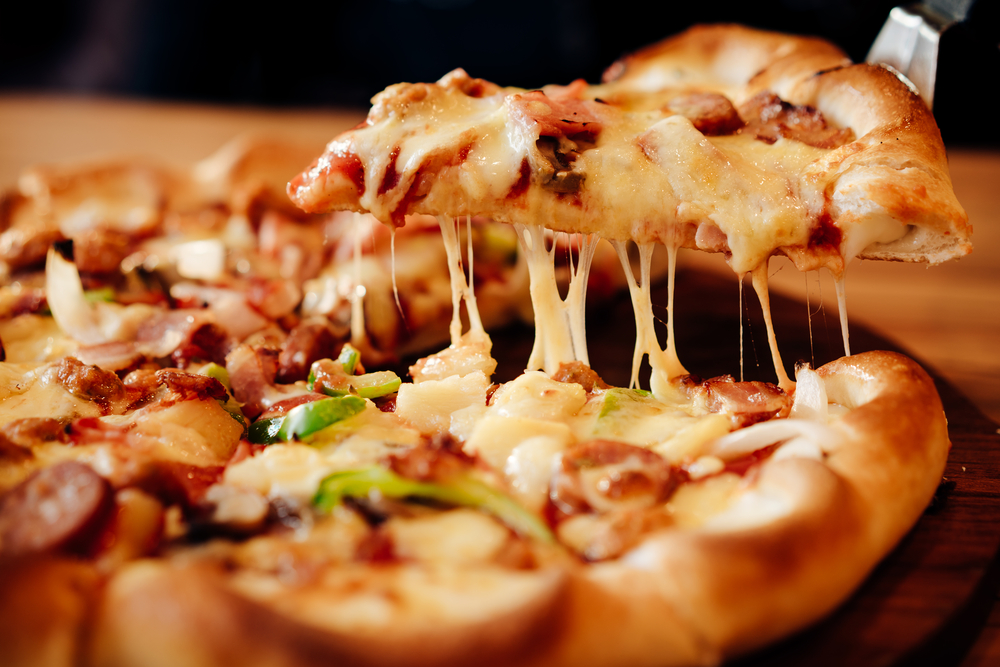Reheating leftovers is a common practice in many households, but how many times can you reheat food safely?
While it may be tempting to keep reheating your leftovers until they’re gone, there are some important food safety guidelines to keep in mind. In this article, we’ll explore the science of reheating food and provide some tips for safely reheating leftovers.
Understanding food safety is crucial when it comes to reheating leftovers. Bacteria can grow rapidly in food that is left at room temperature, so it’s important to store leftovers properly and reheat them to the right temperature.
The USDA recommends storing leftover cooked food in the refrigerator for up to three to four days and reheating it to 165°F. However, it’s important to note that the quality of the food may decrease each time it’s reheated.
When it comes to reheating common foods like chicken, rice, and pasta, there are specific guidelines to follow to ensure that they are safe to eat.
By following these guidelines and using proper storage and reheating techniques, you can prevent food waste and enjoy your leftovers without putting your health at risk.
Key Takeaways
- Reheating leftovers can be safe if done properly and within recommended guidelines.
- Food safety is crucial when it comes to reheating leftovers, and it’s important to store and reheat food properly to prevent the growth of harmful bacteria.
- Following specific guidelines for reheating common foods can help ensure that they are safe to eat.
Understanding Food Safety

When it comes to reheating food, it’s important to understand the basics of food safety. Proper handling and storage of food can help prevent the growth of harmful bacteria and other pathogens that can cause foodborne illnesses.
One of the key factors in food safety is maintaining proper hygiene. This includes washing hands before and after handling food, using clean utensils and cooking surfaces, and keeping food preparation areas clean.
Another important factor is understanding the “danger zone” for food. This refers to the temperature range between 40°F and 140°F, where bacteria can grow rapidly. It’s important to keep perishable foods out of this temperature range for extended periods of time.
When reheating food, it’s important to ensure that it reaches a safe temperature of at least 165°F. This can be done using a food thermometer to check the internal temperature of the food.
It’s also important to limit the number of times that food is reheated. While there is no specific limit to the number of times that food can be safely reheated, each time it is reheated, the risk of bacterial growth increases.
Overall, understanding food safety is crucial when it comes to reheating food. By following proper hygiene practices, understanding the danger zone for food, and ensuring that food is reheated to a safe temperature, the risk of foodborne illness can be greatly reduced.
The Science of Reheating Food

Reheating food is a common practice to make use of leftovers. However, it is important to reheat food safely to avoid the risk of foodborne illnesses.
The science behind reheating food involves understanding the internal temperature of the food and the duration of the reheating process.
When reheating food, it is essential to ensure that the food is heated to a piping hot temperature of at least 165°F (74°C) to kill any bacteria that may have grown on it since the initial cooking.
It is also important to use a food thermometer to check the internal temperature of the food to ensure that it has reached the safe temperature.
Each time food is reheated, it undergoes a decrease in quality, resulting in overcooking, drying out, or changes in texture. Therefore, it is recommended to reheat food only once after its initial cooking and consume it immediately to ensure the best quality.
Proper storage of leftovers is also crucial to prevent foodborne illnesses. Leftover cooked food should be stored in airtight containers and refrigerated promptly. Any unused portion should be returned to the refrigerator within two hours to remain safe.
In summary, the science of reheating food involves understanding the internal temperature of the food and the duration of the reheating process.
Reheating food to a piping hot temperature of at least 165°F (74°C) is essential to kill any bacteria that may have grown on it since the initial cooking. Proper storage of leftovers is also crucial to prevent foodborne illnesses.
Common Foods and Their Reheating Guidelines

When it comes to reheating food, there are certain guidelines that need to be followed to ensure that the food is safe to eat.
Here are some common foods and their reheating guidelines.
Reheating Chicken
Chicken is a popular food item that is often reheated. However, it is important to make sure that the chicken is reheated to the right temperature to prevent the growth of harmful bacteria.
The USDA recommends reheating chicken to an internal temperature of 165°F. Here are some tips for reheating chicken:
- Use a meat thermometer to check the temperature of the chicken.
- Reheat the chicken in the oven, microwave, or on the stove.
- Cover the chicken with a lid or foil to prevent it from drying out.
- Add a little bit of liquid, such as broth or water, to the chicken before reheating to help keep it moist.
Reheating Rice
Rice is another food item that is commonly reheated. However, reheating rice can be tricky because it can quickly become a breeding ground for bacteria. Here are some tips for reheating rice:
- Store the rice in the refrigerator within two hours of cooking.
- Reheat the rice to an internal temperature of 165°F.
- Add a little bit of liquid, such as water or broth, to the rice before reheating to help keep it moist.
- Stir the rice occasionally while reheating to ensure that it heats evenly.
Reheating Seafood
Seafood, such as fish and shrimp, is another popular food item that is often reheated. However, seafood is delicate and can easily become overcooked or dry when reheated. Here are some tips for reheating seafood:
- Reheat the seafood in the oven, microwave, or on the stove.
- Cover the seafood with a lid or foil to prevent it from drying out.
- Add a little bit of liquid, such as broth or water, to the seafood before reheating to help keep it moist.
- Reheat the seafood to an internal temperature of 145°F.
In conclusion, reheating food is a common practice, but it is important to follow the guidelines to ensure that the food is safe to eat. By following these tips, you can safely reheat chicken, rice, and seafood without compromising on taste or quality.
Proper Storage of Leftovers
Proper storage of leftovers is crucial to ensure their safety and prevent the growth of harmful bacteria. When it comes to storing leftovers, there are a few key things to keep in mind.
Firstly, leftovers should be stored in the fridge within two hours of cooking or being removed from an appliance that keeps it warm. This is because bacteria can grow rapidly at room temperature, especially in perishable foods like meat, poultry, and dairy products.
If the temperature is over 90°F, such as at an outdoor picnic during summer, leftovers should be refrigerated within one hour.
When storing leftovers in the fridge, it is important to use shallow containers. This allows the food to cool quickly and evenly, reducing the risk of bacterial growth. It also helps to keep the food fresh for longer. Leftovers should be covered with a lid or plastic wrap to prevent them from drying out or absorbing other flavors in the fridge.
It is recommended to consume leftovers within three to four days, rather than pushing them to the back of the fridge for a full week or more. After this time, the risk of food poisoning increases. If you don’t think you’ll be able to eat leftovers within four days, freeze them right away.
Frozen leftovers will stay safe for a long time, but they usually taste better if eaten within three to four months.
When storing leftovers in the freezer, it is important to use airtight containers or freezer bags. This helps to prevent freezer burn and keeps the food fresh for longer. It is also a good idea to label the container with the date the food was stored, so you can keep track of how long it has been in the freezer.
In summary, proper storage of leftovers involves refrigerating them within two hours of cooking or being removed from an appliance that keeps it warm, using shallow containers, and consuming them within three to four days.
If you can’t eat leftovers within this time frame, freeze them using airtight containers or freezer bags. By following these guidelines, you can ensure the safety and freshness of your leftovers.
The Role of Kitchen Appliances in Reheating

When it comes to reheating food, the kitchen appliances you use can make a big difference in the quality and safety of your meal. Here are some tips for using different kitchen appliances to reheat your food safely.
Using the Oven
The oven is a great option for reheating larger portions of food, such as casseroles or roasted meats. When using the oven, it’s important to preheat it to the appropriate temperature and cover the food with foil or a lid to prevent it from drying out. Here are some general guidelines for reheating food in the oven:
- Preheat the oven to 350°F (175°C).
- Place the food in an oven-safe dish and cover it with foil or a lid.
- Reheat for 20-30 minutes, or until the internal temperature reaches 165°F (74°C).
- Stir or flip the food halfway through the reheating process to ensure even heating.
Using the Microwave
The microwave is a convenient option for reheating smaller portions of food quickly. However, it’s important to use microwave-safe containers and stir the food frequently to prevent hot spots. Here are some general guidelines for reheating food in the microwave:
- Place the food in a microwave-safe dish and cover it with a microwave-safe lid or microwave-safe plastic wrap.
- Microwave on high for 1-2 minutes, then stir the food and check the temperature.
- Continue microwaving in 30-second intervals, stirring in between, until the internal temperature reaches 165°F (74°C).
Using Slow Cookers
Slow cookers are a great option for reheating soups, stews, and other liquid-based dishes. When using a slow cooker, it’s important to heat the food to the appropriate temperature and keep it at a safe temperature until you’re ready to eat. Here are some general guidelines for reheating food in a slow cooker:
- Preheat the slow cooker to the appropriate temperature (usually low or high).
- Place the food in the slow cooker and add enough liquid to cover it.
- Heat on low for 2-4 hours, or on high for 1-2 hours, until the internal temperature reaches 165°F (74°C).
- Keep the slow cooker on the “warm” setting until you’re ready to eat.
Remember, no matter which kitchen appliance you use to reheat your food, it’s important to follow safe food handling guidelines and ensure that the food reaches a safe internal temperature before eating.
Risks of Multiple Reheating
Reheating food is a common practice that can save time and reduce food waste. However, reheating food multiple times can increase the risk of bacterial growth and food poisoning.
When food is reheated, it provides an ideal environment for bacteria to grow and multiply. The more times food is reheated, the higher the risk of bacterial growth and food poisoning.
Bacterial growth occurs when food is left at room temperature for too long, and it is not heated to a high enough temperature to kill the bacteria.
When food is reheated, it must be heated to a temperature of at least 165°F (74°C) to kill any bacteria that may have grown. If the food is not heated to the correct temperature, the bacteria can continue to grow and multiply, increasing the risk of food poisoning.
The risk of bacterial growth and food poisoning is higher when reheating certain types of food. For example, reheating rice can be particularly risky, as it can harbor spores of Bacillus cereus, a bacterium that can cause food poisoning.
Reheating rice can cause the spores to germinate and produce toxins that can cause vomiting and diarrhea.
To reduce the risk of bacterial growth and food poisoning, it is important to follow safe reheating practices. Food should only be reheated once, and any leftovers should be stored in airtight containers and refrigerated promptly.
It is also important to use a food thermometer to ensure that the food is heated to the correct temperature.
In summary, reheating food multiple times can increase the risk of bacterial growth and food poisoning. To reduce this risk, it is important to follow safe reheating practices, including heating food to the correct temperature and storing leftovers properly.
Preventing Food Waste

Reheating food is an excellent way to reduce food waste, as it allows for quick and easy meals throughout the week. However, it is important to ensure that reheated food is safe to eat.
By following proper food handling practices, you can prevent food waste and ensure that your meals are safe to eat.
One way to prevent food waste is to only reheat the amount of food that you plan to eat. If you have leftover food that you do not plan to eat, it is better to store it in the refrigerator or freezer for later use. This will help to prevent the food from spoiling and going to waste.
When reheating hot food, it is important to ensure that it is heated to a safe temperature of at least 165 °F. This will help to kill any harmful bacteria that may be present in the food. It is also important to only reheat hot food once, as reheating it multiple times can increase the risk of foodborne illness.
When reheating cold food, it is important to ensure that it is stored at the proper temperature. Cold food should be kept at a temperature of 40 °F or below to prevent the growth of harmful bacteria. If you are reheating cold food, be sure to heat it to a safe temperature of at least 165 °F.
Loading your refrigerator properly can also help to prevent food waste. By storing food in airtight containers and placing them in the proper location in your refrigerator, you can help to prevent spoilage and extend the shelf life of your food.
It is also important to regularly clean out your refrigerator and check expiration dates to ensure that you are not keeping expired or spoiled food.
Overall, preventing food waste is an important part of food safety and can help to save money and reduce the environmental impact of food production. By following proper food handling practices and storing food properly, you can ensure that your meals are safe to eat and prevent food waste.
Measuring Food Temperature
To ensure that reheated food is safe to eat, it is necessary to measure its internal temperature. The best way to do this is by using a food thermometer.
A food thermometer is a tool that measures the internal temperature of cooked food. It is important to use a food thermometer to ensure that the food has reached a safe temperature to kill any harmful bacteria that may be present.
When using a food thermometer, it is important to insert it into the thickest part of the food, away from any bone or fat. This will give an accurate reading of the internal temperature of the food.
The recommended internal temperature for cooked food is 165°F (74°C). This temperature is high enough to kill any harmful bacteria that may be present in the food.
It is important to note that different types of food may require different internal temperatures. For example, ground meat should be cooked to a temperature of 160°F (71°C), while poultry should be cooked to a temperature of 165°F (74°C).
In addition to measuring the internal temperature of food, it is also important to ensure that the food is reheated to the correct temperature. Leftover food should be reheated to an internal temperature of 165°F (74°C) before being consumed.
Overall, using a food thermometer to measure the internal temperature of cooked and reheated food is an important step in ensuring that the food is safe to eat.
Safe Thawing Techniques
Thawing food safely is just as important as cooking it properly. When food is frozen, the bacteria present in it become dormant, but they become active again as soon as the food starts to thaw. This is why it’s important to thaw food safely to prevent the growth of harmful bacteria that can cause food poisoning.
Freezing
Freezing is a great way to preserve food for later use, but it’s important to follow proper freezing techniques to ensure that the food stays safe to eat. When freezing food, make sure to:
- Freeze food as soon as possible after it has been cooked or purchased.
- Label food with the date it was frozen, so you know how long it has been in the freezer.
- Store food in airtight containers or freezer bags to prevent freezer burn.
- Freeze food in small portions to make it easier to thaw and use.
Cold Water
Thawing food in cold water is a quick and safe method, but it requires some attention to detail. When thawing food in cold water, make sure to:
- Place the frozen food in a leak-proof bag.
- Submerge the bag in cold water and change the water every 30 minutes.
- Cook the food immediately after it has thawed.
Perishable Foods
Perishable foods, such as meat, poultry, fish, and dairy products, need to be handled with extra care to prevent the growth of harmful bacteria. When thawing perishable foods, make sure to:
- Thaw food in the refrigerator or cold water, never at room temperature.
- Use a separate cutting board and utensils for raw and cooked foods to prevent cross-contamination.
- Cook food to the proper temperature to kill any bacteria that may be present.
By following these safe thawing techniques, you can ensure that your food stays safe to eat and free from harmful bacteria.
Frequently Asked Questions
How many times can you safely reheat food?
As long as you reheat the food to at least 165°F (73.9°C) each time, it is technically safe to eat. However, it is best practice to reheat the amount you think you’ll eat to avoid reheating the same food multiple times.
What is the maximum number of times you can reheat food?
There is no definitive answer to this question. While there is no limit to the number of times you can reheat food, reheating it multiple times can lead to a decrease in the quality of the food, and it can also increase the risk of foodborne illness.
Can you reheat food more than once?
Yes, you can reheat food more than once. However, it is recommended to reheat the food only once after initial cooking and consume it immediately. Proper storage in airtight containers and refrigeration promptly can help reduce the risk of foodborne illness.
Is it safe to reheat food multiple times?
Reheating food multiple times can lead to a decrease in the quality of the food and increase the risk of foodborne illness. It is best practice to reheat the amount you think you’ll eat to avoid reheating the same food multiple times.
Why is it not recommended to reheat food repeatedly?
Reheating food repeatedly can lead to a decrease in the quality of the food, and it can also increase the risk of foodborne illness. Each time you reheat the food, it can become overcooked, dry out, or there can be a significant change in texture.
What are the risks of reheating food too many times?
Reheating food too many times can lead to the growth of harmful bacteria, which can cause foodborne illness. Additionally, each time you reheat the food, it can become overcooked, dry out, or there can be a significant change in texture.







